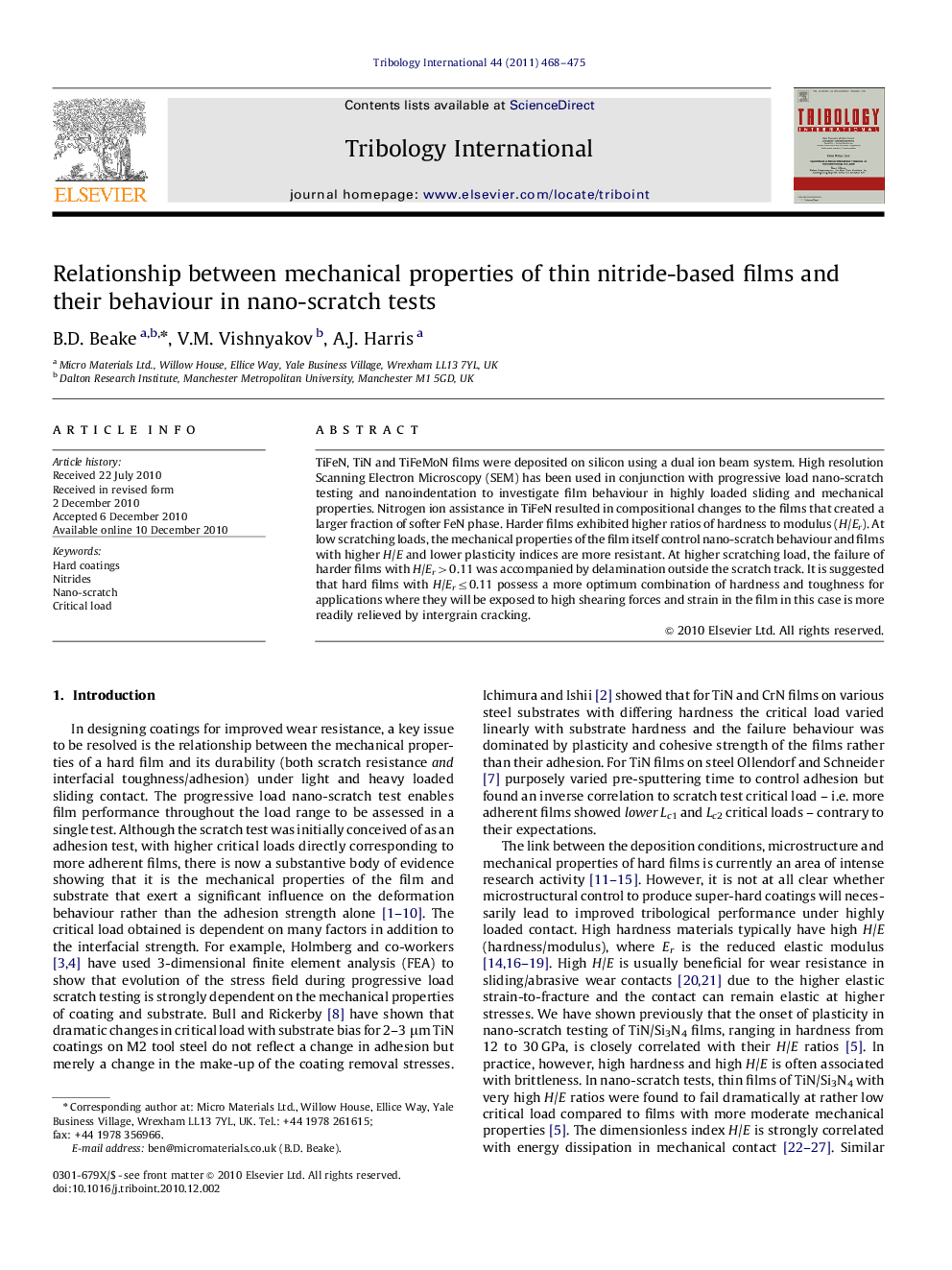| Article ID | Journal | Published Year | Pages | File Type |
|---|---|---|---|---|
| 615657 | Tribology International | 2011 | 8 Pages |
TiFeN, TiN and TiFeMoN films were deposited on silicon using a dual ion beam system. High resolution Scanning Electron Microscopy (SEM) has been used in conjunction with progressive load nano-scratch testing and nanoindentation to investigate film behaviour in highly loaded sliding and mechanical properties. Nitrogen ion assistance in TiFeN resulted in compositional changes to the films that created a larger fraction of softer FeN phase. Harder films exhibited higher ratios of hardness to modulus (H/Er). At low scratching loads, the mechanical properties of the film itself control nano-scratch behaviour and films with higher H/E and lower plasticity indices are more resistant. At higher scratching load, the failure of harder films with H/Er>0.11 was accompanied by delamination outside the scratch track. It is suggested that hard films with H/Er≤0.11 possess a more optimum combination of hardness and toughness for applications where they will be exposed to high shearing forces and strain in the film in this case is more readily relieved by intergrain cracking.
Research highlights► Films with higher H/E and lower plasticity indices are more resistant to scratching at low load. ► At higher scratching load failure of harder films with very high H/Er (>0.11) was accompanied by large-area delamination. ► Films with slightly lower H/Er possess an optimum combination of hardness and toughness for applications where they will be exposed to high shearing forces.
